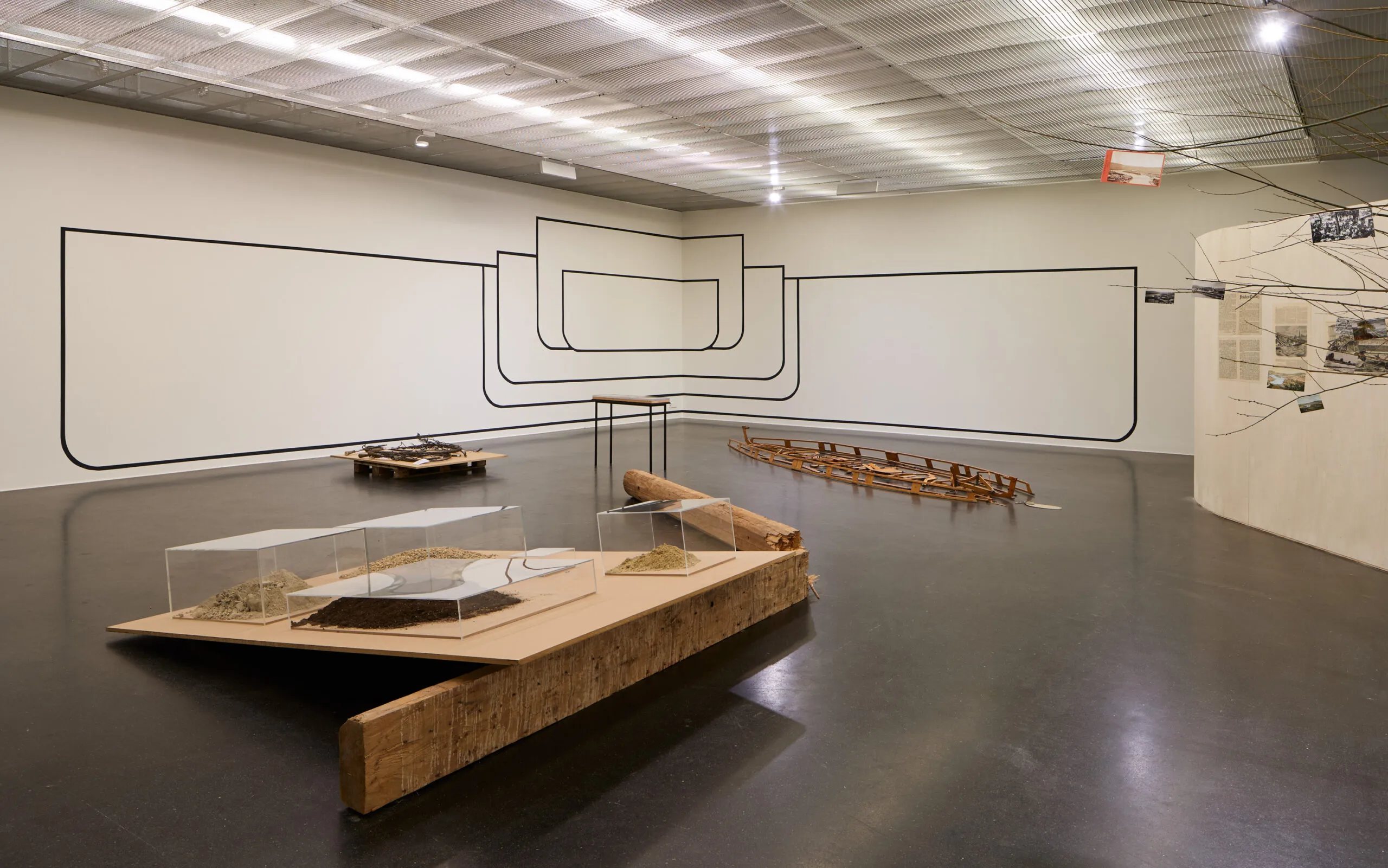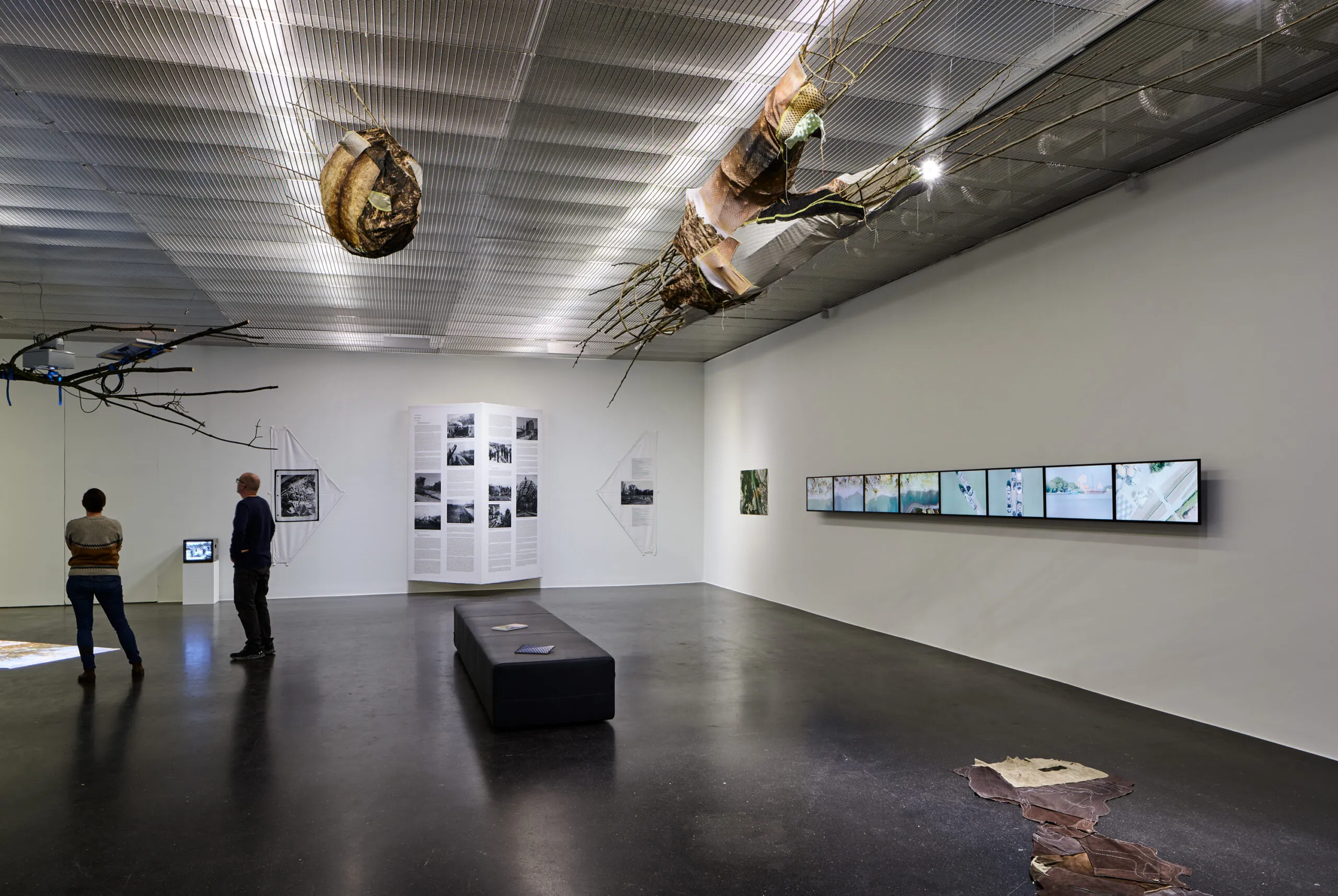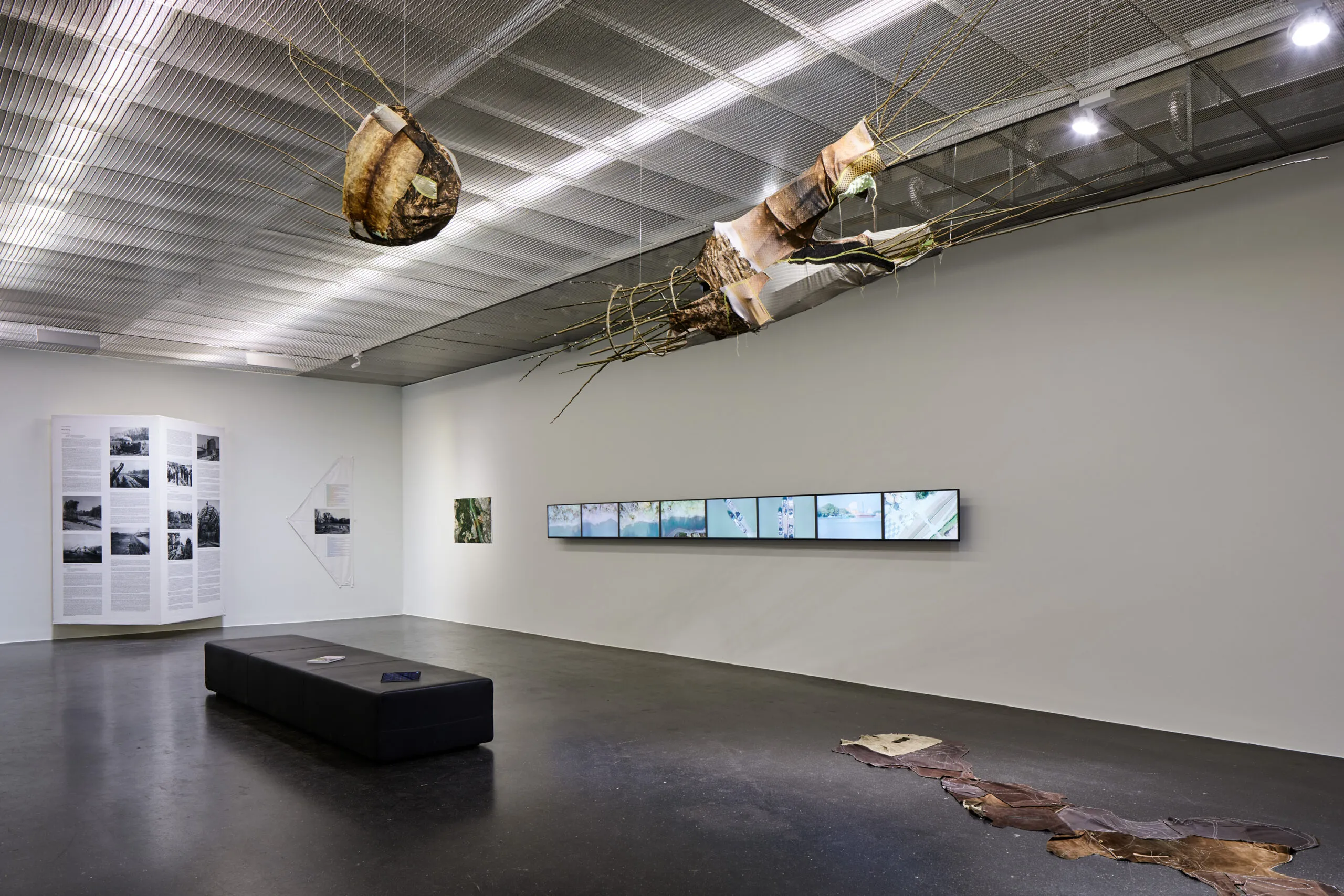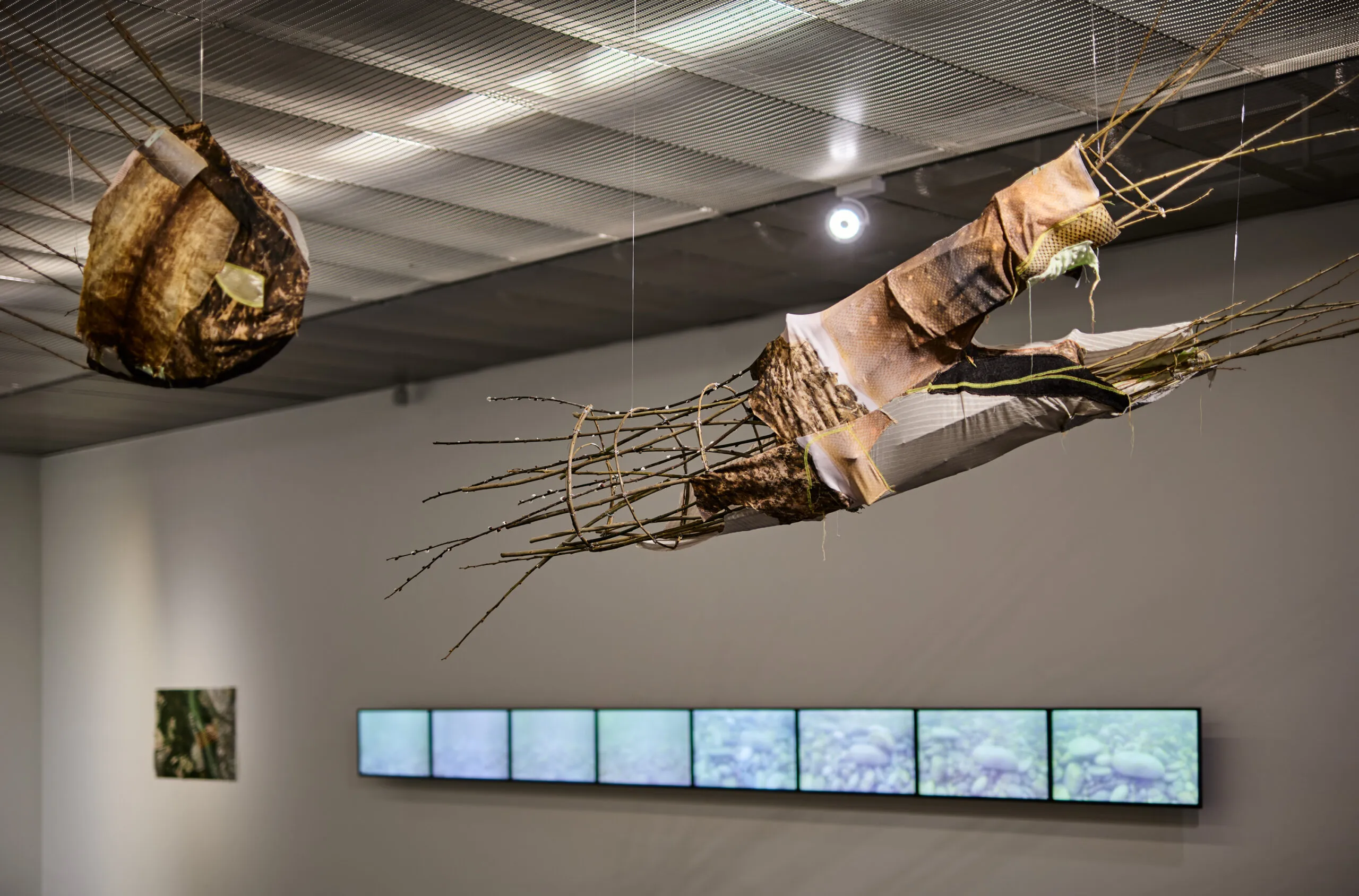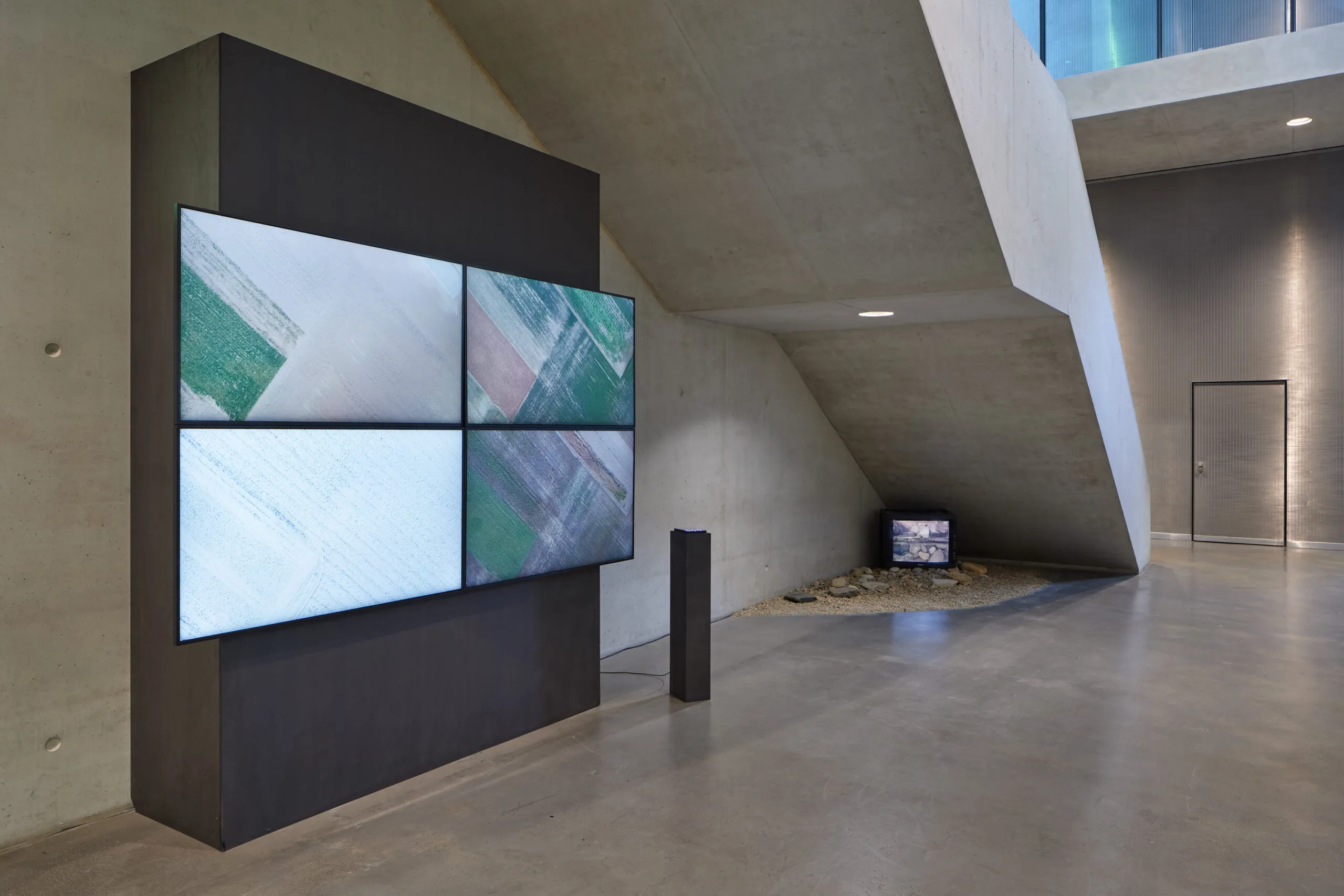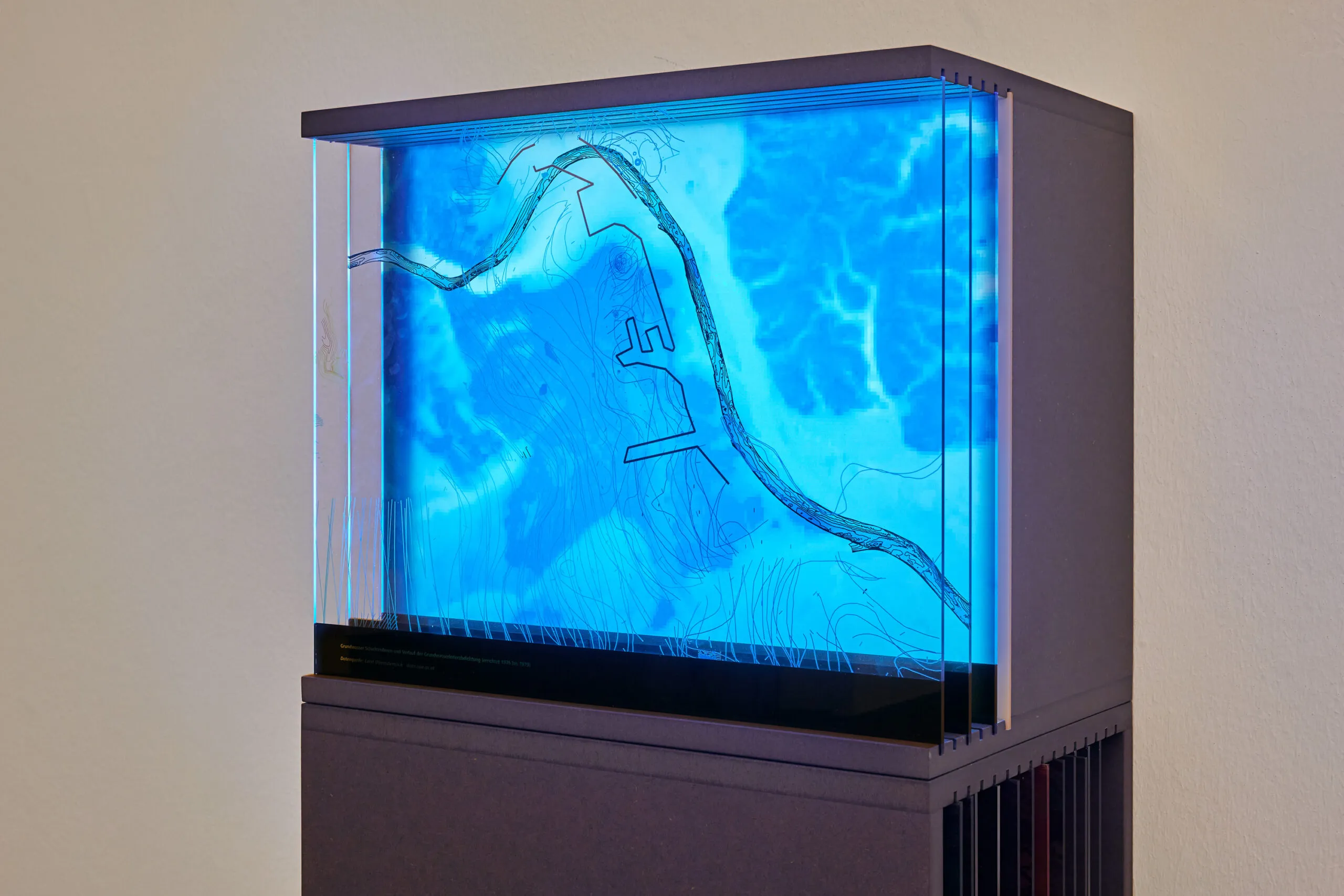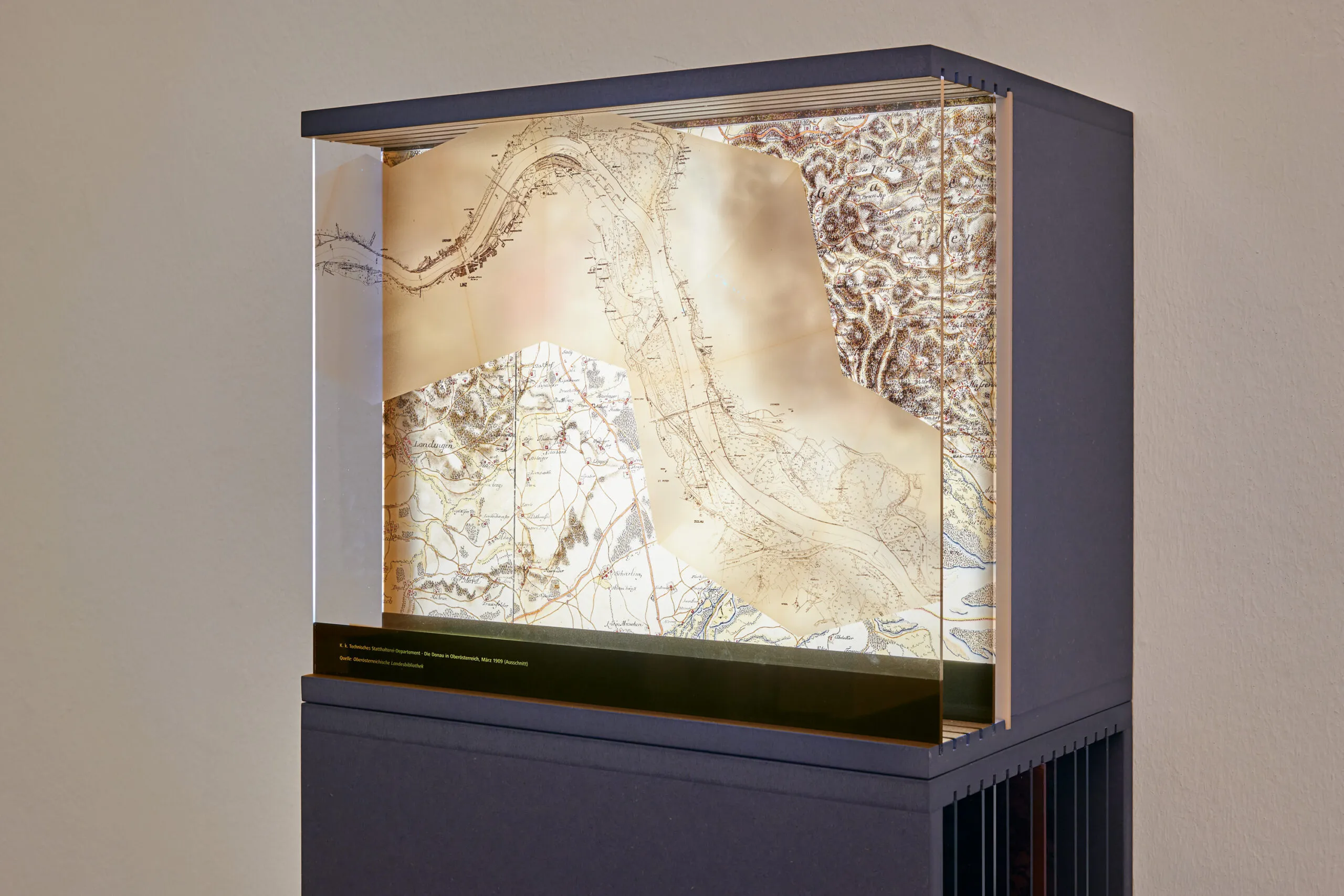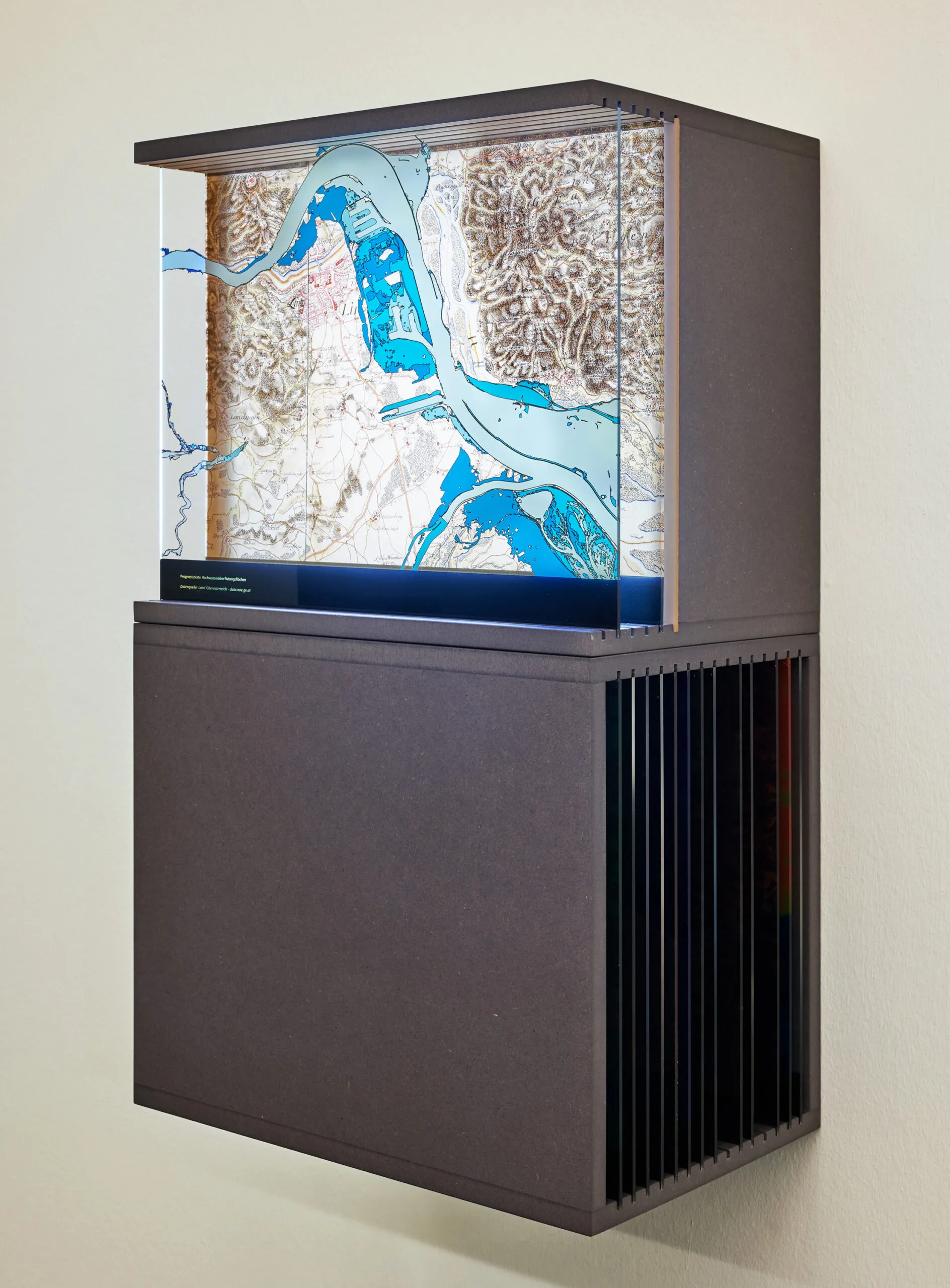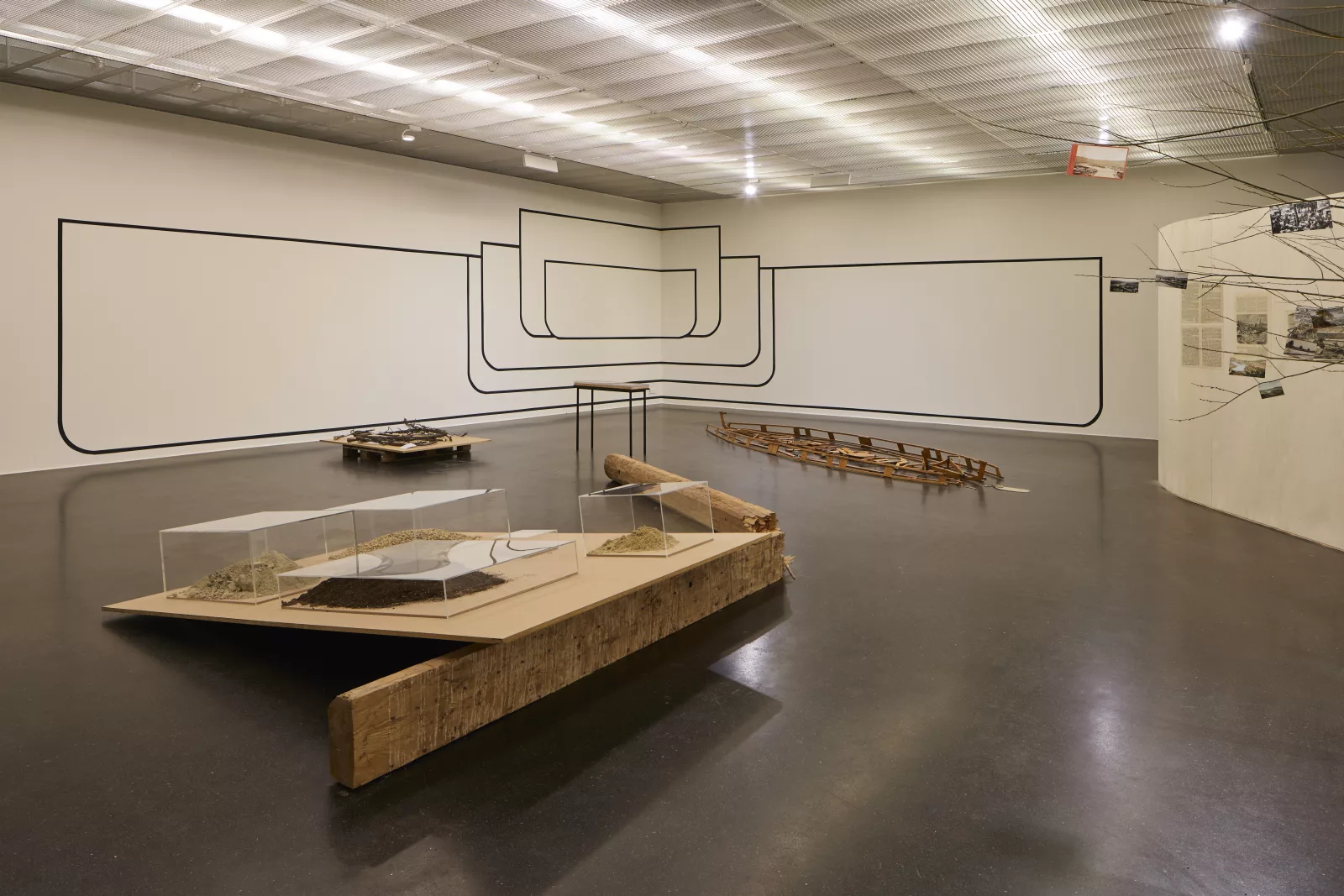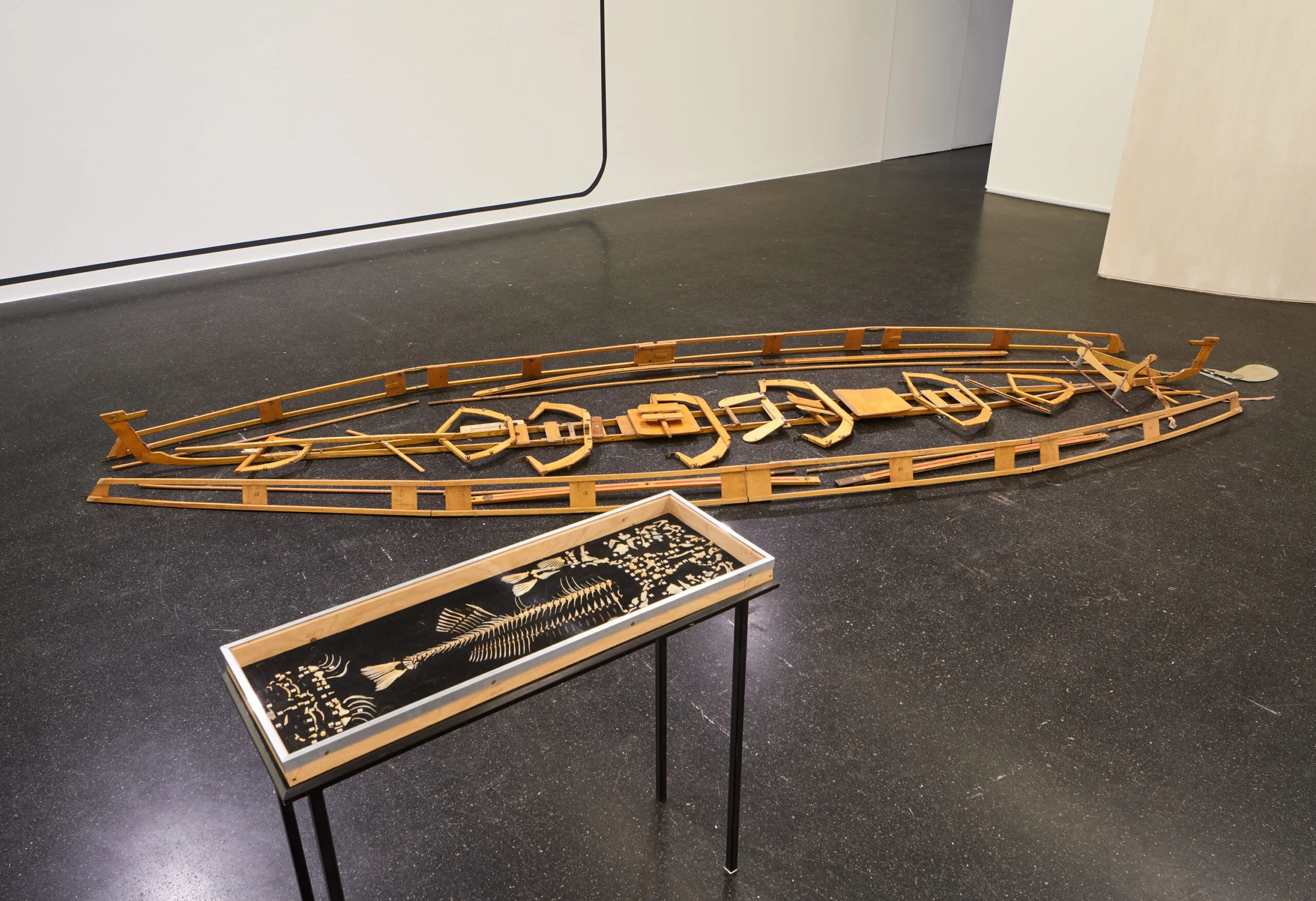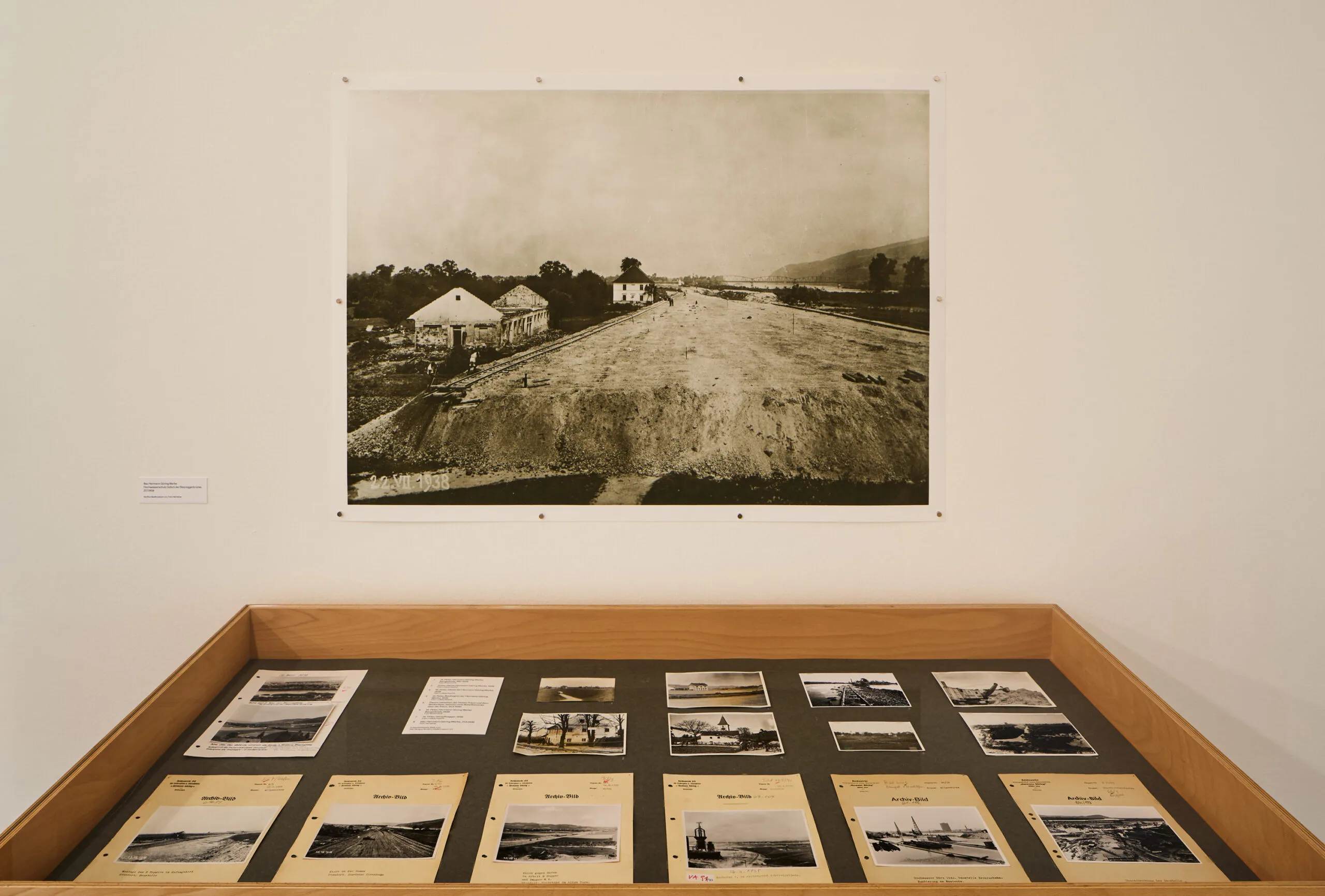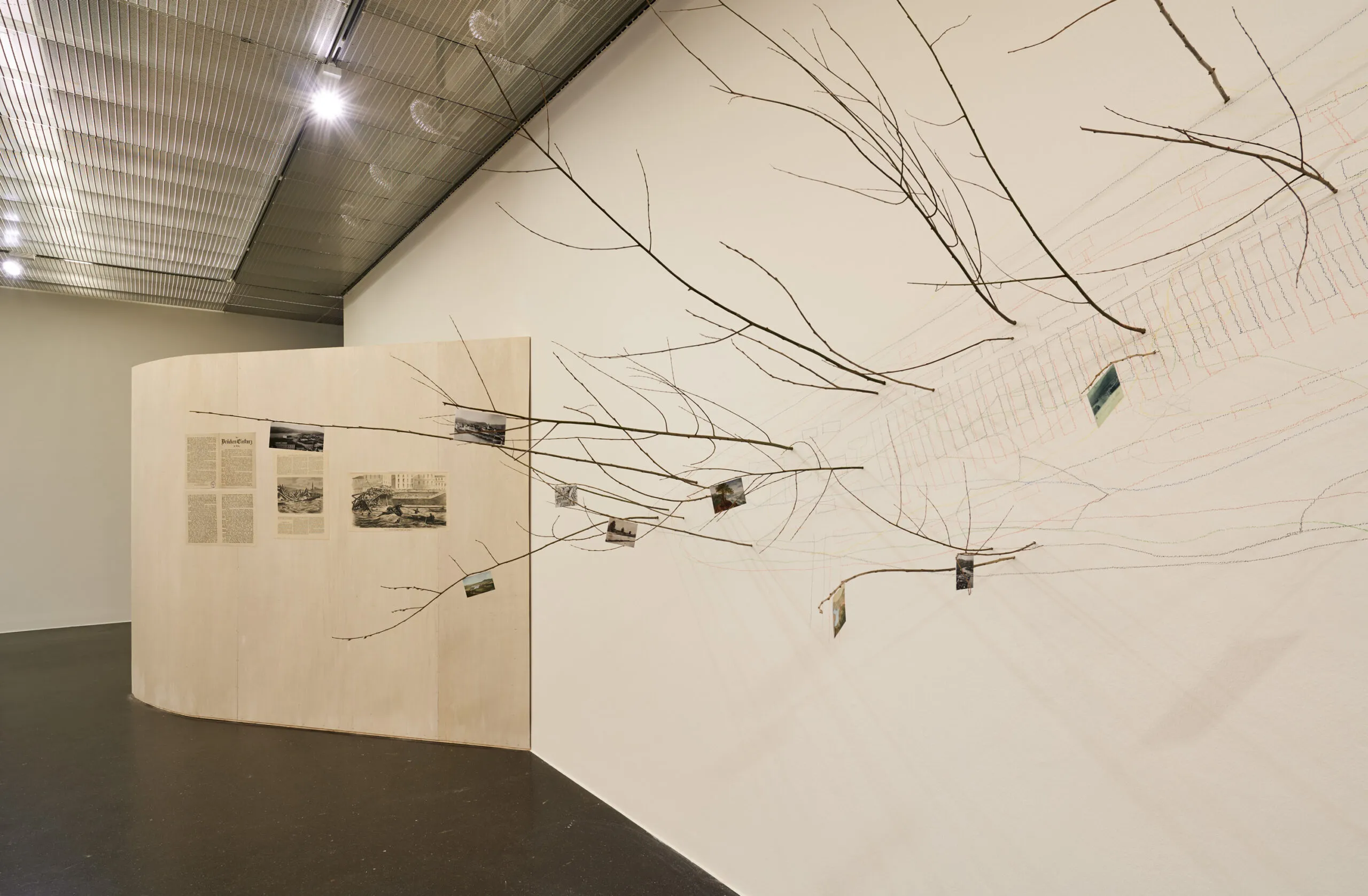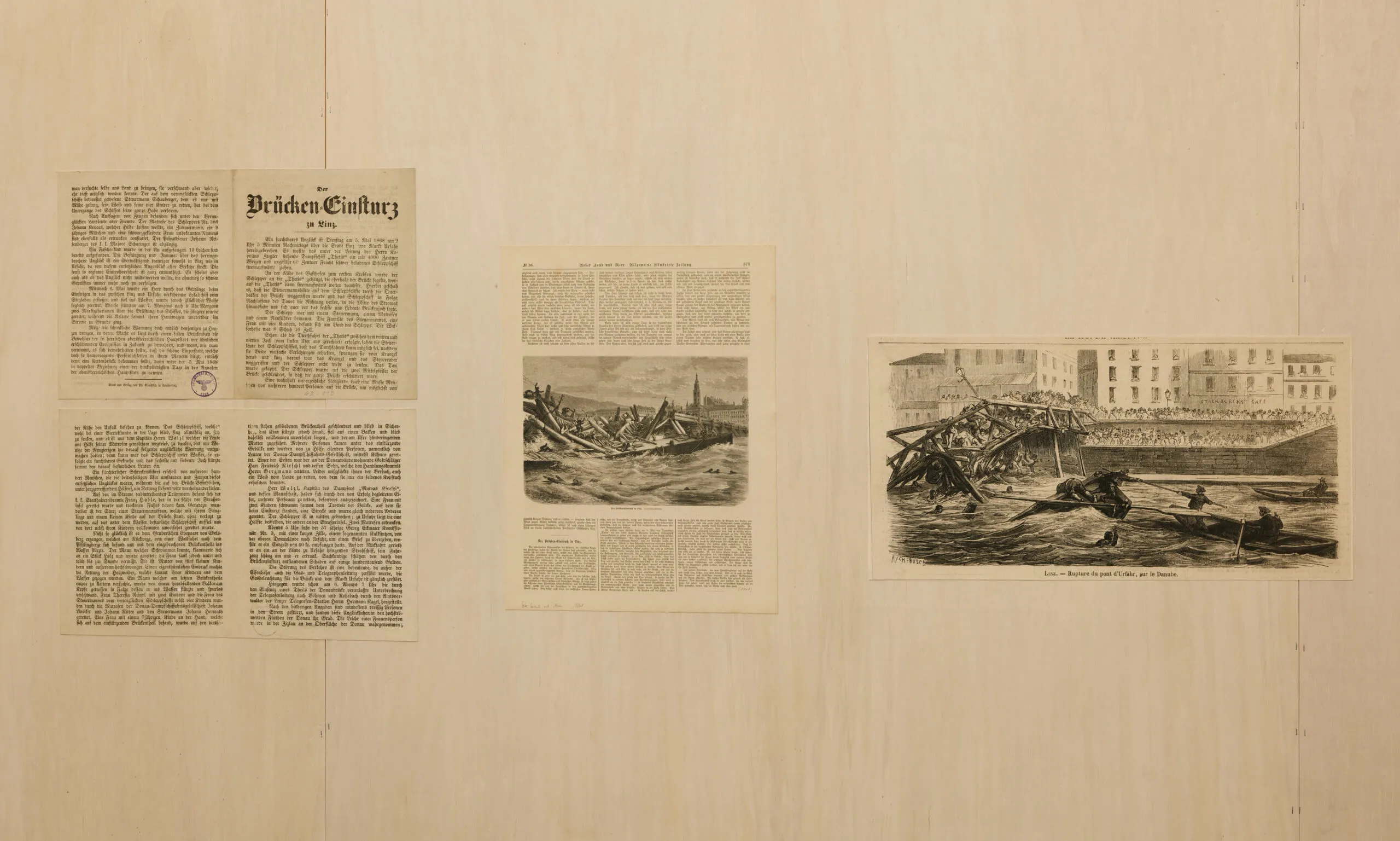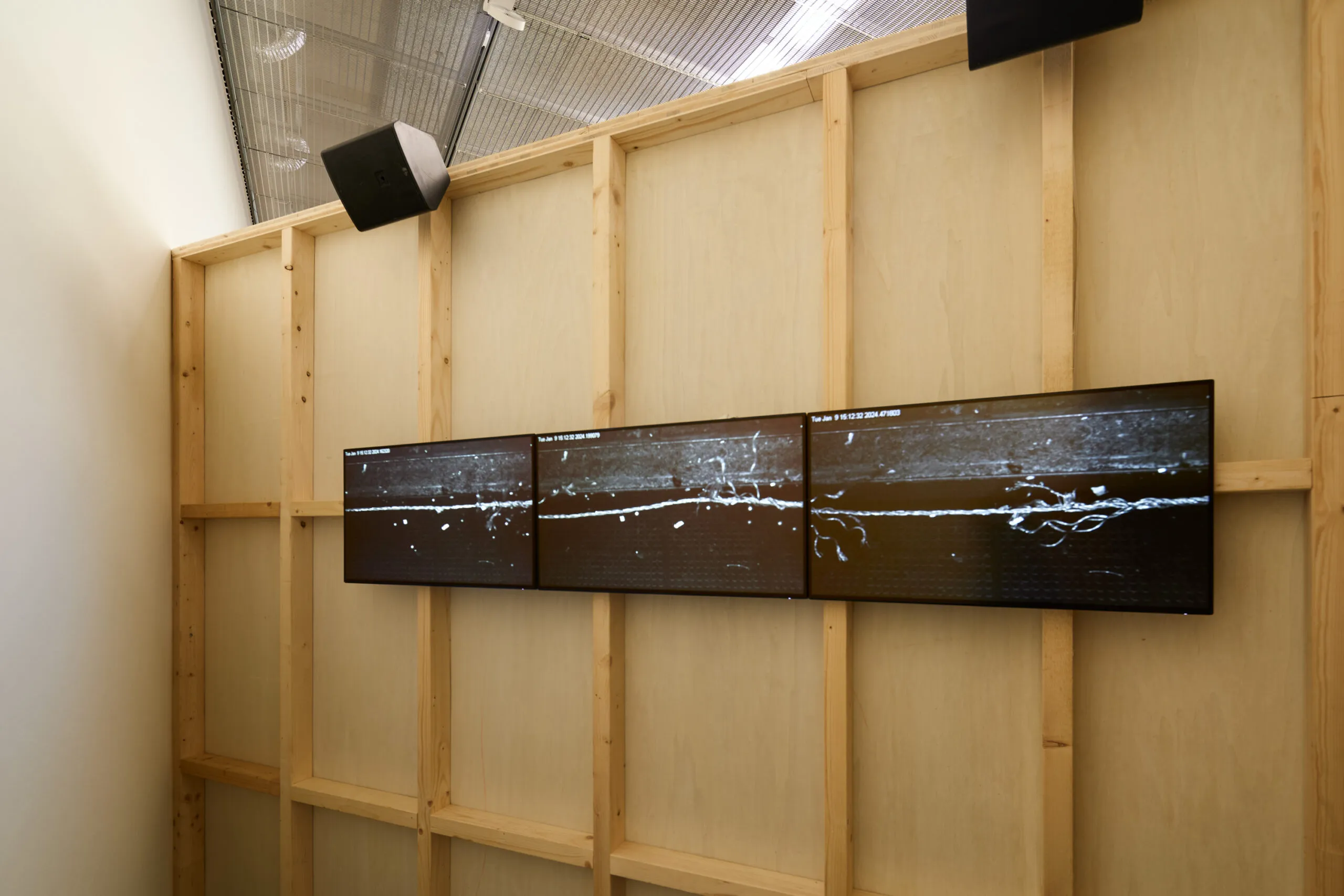Danube:Island
Exhibition, LENTOS Museum of Modern Art, Linz, 2024
intro
Donau:Insel
Industrial zone, local recreational area and sensitive ecosystem – the Danube is a reconfigured cultural landscape marked by stark contrasts. In collaboration with environmental historian and publicist Ortrun Veichtlbauer the Austrian artists Herwig Turk and Gebhard Sengmüller have chosen this as the starting point for their artistic research: as part of their project Danube: Sediment Shifts in Interstitial Space they have created a complex of works, originally conceived for Vienna, at the interface of art and the natural sciences. These are now being augmented for the exhibition by geographical, ecological and historical aspects of the city of Linz. Using the island as an artistic figure of thought, Turk and Sengmüller combine historical realities – such as the Strasserinsel, which existed in Linz until the 19th century – with current socio-political discourses on the utilisation of the Danube region by means of an artificial island.
Videos, installations, photographs and sculptural objects allow an intensive exploration of the river and its relevance for mankind and the environment. The works shown in the exhibition create a multidimensional, dynamic landscape and interweave different thematic fields into a dense visual narrative.
An exhibition by: Herwig Turk & Gebhard Sengmüller in collaboration with Ortrun Veichtlbauer
Lentos Museum Moderner Kunst Linz
text
Danube:Island
Industrial zone, local recreational area and sensitive ecosystem – the Danube is a reconfigured cultural landscape marked by stark contrasts. In collaboration with Ortrun Veichtlbauer, the Austrian artists Herwig Turk and Gebhard Sengmüller have chosen this as the starting point for their artistic research: as part of their project Danube: Sediment Shifts in Interstitial Space they have created a complex of works, originally conceived for Vienna, at the interface of art and the natural sciences. These are now being augmented for the exhibition by geo-graphical, ecological and historical aspects of the city of Linz.
In urban agglomerations close to rivers, such as Linz or Vienna, we can clearly see how much natural water cycles and watercourses have been influenced by human activities and will continue to be so in the future. Technological developments are inscribed in the riverbed, but also affect the drainage area of the river system and the groundwater. Reshaping through regulation, built-up river banks, industrial areas and barrages create a landscape that is very different from that of 150 years ago. With their artistic strategies, Turk and Sengmüller attempt to make these transformations visible.
Old wooden beams, ropes, chains and their tested load-bearing capacity tell of the changing transportation conditions and crossings of the mighty river. The vanished islands, floodplains and arms of the Danube create nostalgic afterimages of a landscape that was never just an idyll. The pulse of the river is different today, its rhythm is constantly changing. The quarry ponds excavated 70 years ago are now protected islands of biodiversity - oases in the lee of Austria’s largest industrial complex. The sealing of the groundwater to the Danube also changed the metabolism of the river. Slag heaps create industrial panoramas on the banks of the Traun river. Drone shots taken around the industrial area show structures of bizarre beauty.
Abstract patterns of landings, rails, roads, storage areas and accumulated materials of all shades meet the different colors of the water at the confluence of the Traun and Danube rivers. Historical photographs document in snapshots the first phase of the transformation of the agricultural areas of St. Peter and Zizlau into industrially used spaces. The process of a radical reorientation of the landscape design also manifests itself from the “Anschluss” year of 1938, when fertile layers of humus were removed and an industrial landscape was established.
But what are we talking about when we talk about nature today? We are part of the cycles, modify them and change with them. We have long since ended up in a spiral that does not allow us to stay put. Time and again, we have to intervene and become entangled in new conflicts that make further interventions necessary. With the help of artistic-scientific methods, Danube:Island not only looks at the present-day surfaces of the landscape, but also wanders along the time axis into the past and also into the future.
An exhibition by: Herwig Turk & Gebhard Sengmüller in collaboration with Ortrun Veichtlbauer
Lentos Museum of Modern Art Linz 2024
